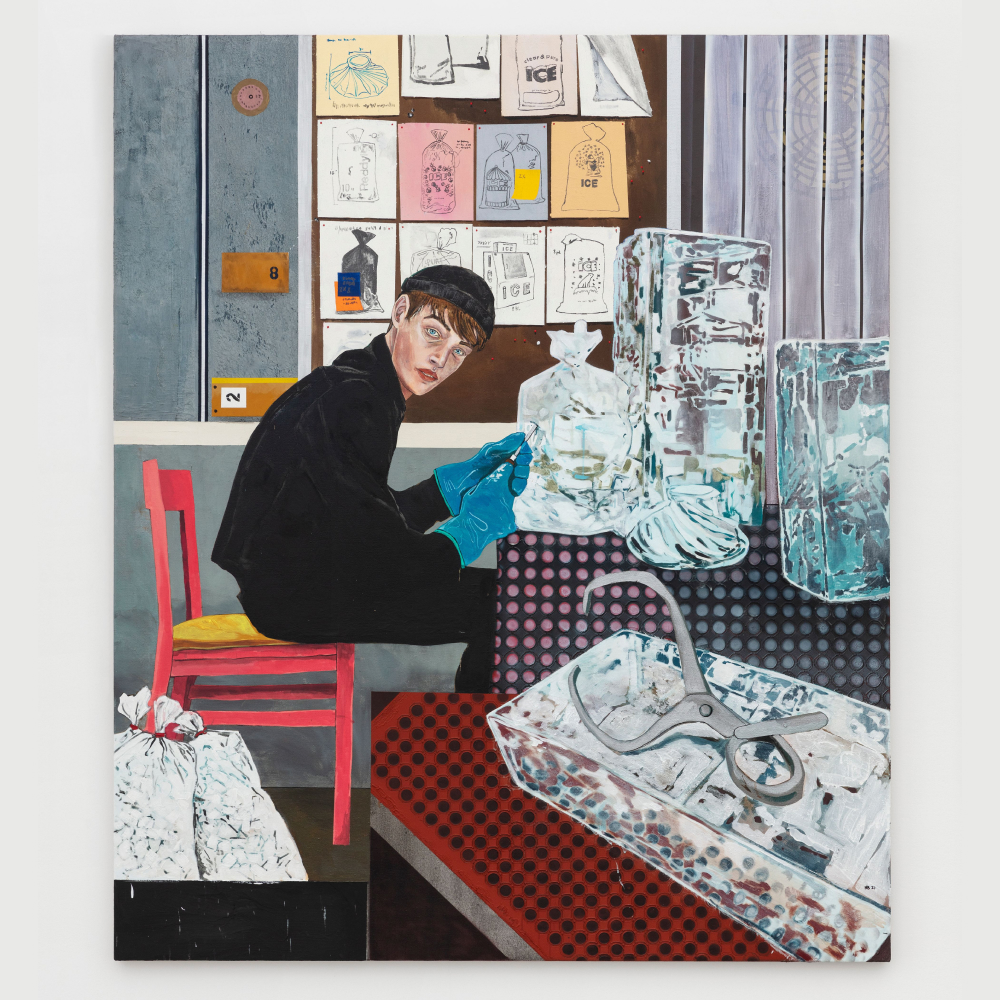May 4, 2025Art history has only a limited number of truly distinctive gestures, ones that we recognize in an instant and that summon the makers’ names immediately.
Franz Kline’s big black slashes on white canvases from the 1950s fall into that category. Confident, bold and pared down to the basics of form and line, they still exert enormous power and are one of the lasting achievements of Abstract Expressionism.

But Kline (1910–62) was 40 years old in 1950 when he debuted the series that would define his legacy. It turns out that his signature style was arrived at only after much experimenting, surprisingly enough, in the realm of the figure.
A new show at the Manhattan gallery Hirschl & Adler Modern — “Prelude: The Early Work of Franz Kline,” on view until May 30 — will come as a revelation to fans of modern art.
If you think you know Kline, you probably don’t.


The show comprises more than 25 works in ink, oil and watercolor, all sourced from the collection of the artist’s friend and earliest major patron, David Orr (1904–1997), who passed them down to the family members now selling them. Many have been featured in major museum exhibitions across the country.
“We get to see him trying on styles,” says Shelley Farmer, a director at Hirschl & Adler and the organizer of the show. “These works are all quite different.”
The exhibition’s scholarly approach is typical for the gallery. “At Hirschl & Adler, we like the historical, the academic,” says Farmer. “We’re a bit nerdy. We want to add to the conversation and get into the development of an important artist.”

In December, Hirschl & Adler offered some early Kline works from the same collection at Art Basel Miami Beach, inspiring acclaim and demand, so it has already added to the conversation. “The name brought them in,” Farmer says of fairgoers’ attraction to the show, “but then, they fell in love with the artworks.”
Two things will strike viewers of “Prelude” right away: The compositions are figural, not abstract, and many are done in an array of glorious colors; Kline seems to have had a particular penchant for deep blues and greens.
All sorts of influences and commonalities can be seen — the forms in the early work of Arshile Gorky and Willem de Kooning, Edward Hopper’s urban views and perhaps the palette of Maurice Prendergast.


In particular, Kline was taking a page from the Ashcan School, urban realists of the early 20th century who included Robert Henri, George Bellows and John Sloan.
“These pre-1950 works are so little known,” says Robert Mattison, an emeritus professor of art history at Lafayette College and an expert on Kline. “He’s trying to discover where he fits in the art he knows about. He’s finding his own identity.”
A native of Wilkes-Barre, Pennsylvania, Kline studied art in Boston and London before moving to New York City in 1939 with his wife, the ballet dancer Elizabeth Parsons, whom he had met in England.
He immediately found the downtown Manhattan milieu that mattered at the time. “He’s hanging out with all these cool artists,” Farmer says about the famously hard-drinking Cedar Tavern set, which included Jackson Pollock.

The proximity to the Greenwich Village art scene paid off. “He met David Orr in Washington Square Park one day, and they hit it off,” says Farmer. It was a fateful chance encounter. Kline was making art and doing odd jobs, and Orr had a successful corrugated-cardboard-box company and the means to start buying art. He spent the next two decades buying Kline’s.
The friendship thrived. The Orr family hung out with Kline so much that they built him a studio at their Cedarhurst home on Long Island.
Among the works in the Hirschl & Adler show is the oil Portrait of I.D. Orr, 1941, a sensitive and fairly realistic rendering of his patron and friend. From the same year is the oil Below South Ferry, a cityscape whose colors and brushwork are strongly reminiscent of the Ashcan painters’ pieces.

As the decade progresses, figure and form start to break apart, although the change does not progress linearly. In Elizabeth (seated figure with cat), 1947, a small ink and pastel on paper, Kline’s wife is recognizably a person, but she is composed of blocks of color. The same is true of a beloved cat of Kline’s depicted in the watercolor, ink and pastel Kitska, 1949.
Some of the show’s works are tiny, measuring just a few inches wide and tall, but they are forceful nonetheless. “He packs so much into small pictures,” marvels Farmer.

In the oil Gloria, 1947, and the small ink Reclining Nude of the same year, the lack of color and the reliance on strong black outlines presage what’s to come. “Gloria looks close to what we would think a figural work by Kline would be,” says Farmer.
It turns out that Kline’s move to emotive black slashes, a mere three years away, was also a move toward depicting the landscape of his youth but in abstracted form.
He grew up in a coal and railroad area that was once sooty and thriving but, by the 1950s, had suffered from the industrial decline seen all over the country. Kline was inspired by, and then elegized, the X-shaped railroad trestles he once knew; some of the mature paintings are named after Pennsylvania trains.

As Mattison puts it: “A big part of his invention was rethinking his time in coal country. It has the feeling of something that is powerful, with a heroic dynamism but also ruptured.”
Was Kline’s dramatic change of style its own kind of rupture? Farmer sees it more as an evolution, and one whose early stages are extremely compelling.
“We often think of Kline as a fully developed artist, and we don’t pay attention to what he was before that,” she says. “We’re seeing him work out what kind of artist he wants to be.”



